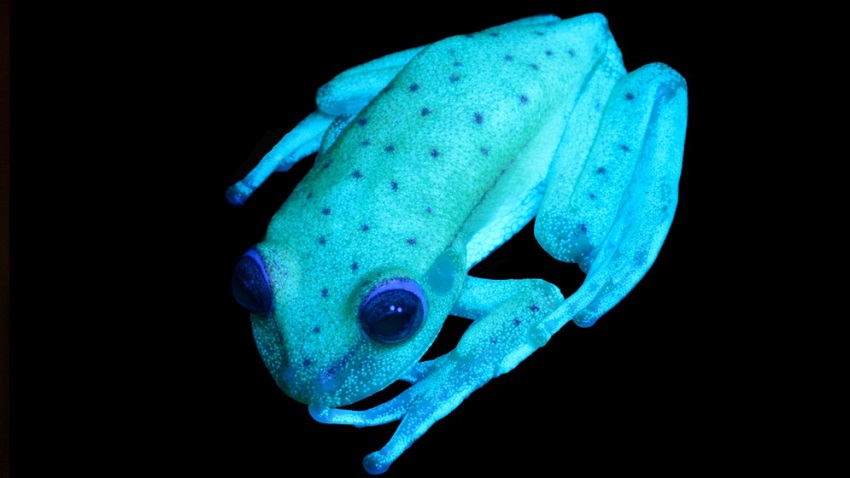A brand new article in Nature reveals a new truth about amphibians: many of them glow. While we can normally not see this glowing light radiating from their skin, a new technique is revealing the hidden truth.

This frog, and many other amphibian species explored in the study, glow with fluorescence when they are hit by certain wavelengths of light. To fully understand why amphibians glow under certain lights, we have to understand some basic biology concepts.
Biofluorescence
There are many substances in nature that emit fluorescence. Fluorescence is caused by a fairly simple physical phenomenon. When energy-loaded light photons hit certain types of molecules, the molecules absorb some of the energy. Then, the excess energy moves through the molecule until it escapes.
When the energy escapes, it is emitted as new photons. However, because of the shape, size, and chemical properties of the molecule they are emitted from, these photons come off in a specific frequency (or color).
In amphibians, the photons emitted are mostly within the green spectrum, giving the amphibians a green glow under the right conditions. These amphibians have molecules created by their bodies that can create this fluorescence. This is considered “biofluorescence” because it is a molecule produced by biology that creates the glowing light.
Animal Perception
When we start seeing fluorescence in animals, we have to ask: what is the purpose?
While this question is still being answered, scientists have uncovered a myriad of uses that animals use fluorescence for. Salamanders are known to signal to each other by flashing their stomachs, areas that are full of biofluorescent molecules. This is thought to be a territorial threat display. Fish also display a wide variety of fluorescence, and scientists theorize that these patterns may also be for communication and territorial purposes.

However, the presence of fluorescence is not likely to be arbitrary. It is assumed that if animals show and use this fluorescence that they can also perceive the fluorescence. In other words, not only do amphibians show this coloring, but they can probably see it without the use of filters, special cameras, and the other scientific equipment that humans need to see it!
